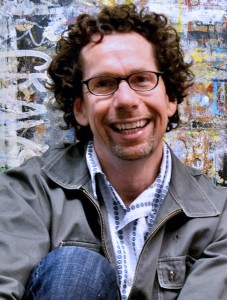by Mike Telin

Composers can be inspired by many things. A visit to a special place, an event, or listening to a piece of music can serve as the impetus to sit down and start writing. Composer and violist Kurt Rohde said that he found inspiration while preparing for a performance of Beethoven’s Op. 127 string quartet with the Left Coast Chamber Ensemble.
“Op. 127 happens to be my favorite Beethoven Quartet,” the Rome and Berlin prize-winner said during a telephone conversation. “I was inspired by the first movement because musically it does everything wrong in the most perfect way, and the result is this sublime, even extra-musical experience.”
On Friday, July 1 at 8:00 pm in Reinberger Chamber Music Hall at Severance Hall, ChamberFest Cleveland will present Kurt Rohde’s …maestoso…misterioso for amplified violin, viola and assorted items. The program, titled “Schubert Journeys,” also includes Franz Schubert’s Quartettsatz in c and his Octet in F. Rohde will be on hand to discuss his work at 7:15 pm.
Rohde, who teaches composition and theory at the University of California, Davis, said that he had been fascinated with Op. 127’s opening maestoso for some time. “It’s so clear and direct. How can an e-flat chord followed by an eighth note, a quarter note, another eighth note, and a half note — with just tonic/dominant functions — be so rich? At the same time it’s rhythmically deceptive and most people don’t play it as it is written. So I thought it would be great to write a piece where the opening is a ‘maestoso’ but one that is deceptive and leads to someplace that is completely unforeseen and mysterious.”
In addition to its violin and viola parts, Rohde’s work requires the performers to sing, strike gongs, and play harmonicas and Chinese paper accordions — which he described as humble instruments. “The performers just hit the gong, breathe into the harmonica, and open and close the accordions,” he noted. “So you get a very rich musical sound by the simplest physical means. By the end, you get to the simplest of all musical instruments, which is singing.”
Regarding the electronics, Rohde explained that he will record the sound on his laptop in real-time, save it, and loop it back in layers throughout the duration of the eighteen-minute work. “I can’t do it exactly the same each time, and the musicians can’t play it exactly the same each time, so each performance is slightly different.”
If you’re wondering where you can purchase Chinese paper accordions, the composer said that while they can be hard to find, he buys them in bulk in San Francisco’s Chinatown. “They’re like 99 cents each,” he said. “Basically they’re shiny little toys made of cardboard. A kid could probably play with them non-stop for a week before they’d disintegrate. They have a captivating sound that bridges the sound of the harmonica and a timbre almost like human breath. Each one produces a different pitch, so there is an element of unpredictability that comes with them.”
If this is all sounding a little complicated, Rohde said that it’s just a matter of figuring out different aspects of the puzzle. “The string parts are challenging but I think they’re pretty idiomatic. It might take a couple of weeks to learn them, but the players can put their parts together in maybe three rehearsals. Then they have to figure out the choreography, like when to reach down for the harmonica, or when to hit the gong, and that takes a couple of rehearsals. Then you need a tech rehearsal, and as I have learned when it comes to electronics, if something can go wrong, it will go wrong, no matter how foolproof things are.” Having previously performed …maestoso…misterioso with violinist Diana Cohen, Rohde looks forward to teaming up with her again, as well as with violist Yura Lee for Friday’s performance.
As a child Kurt Rohde had aspirations of being a performer, but he soon developed an interest in composition. “It’s like seeing someone on the playground doing something on the play-set and you think, ‘Oh, I can do that,’” he recalled. “I remember asking my viola teacher why I had to play what was on the page. She told me it was because that was what the composer wrote. I remember thinking, ‘Oh, this was made by a person,’ which for an eleven-year-old makes perfect sense. Then you spend the next four decades working at it and you think, ‘This is much harder than I thought it would be.’”
Published on ClevelandClassical.com June 28, 2016.
Click here for a printable copy of this article



